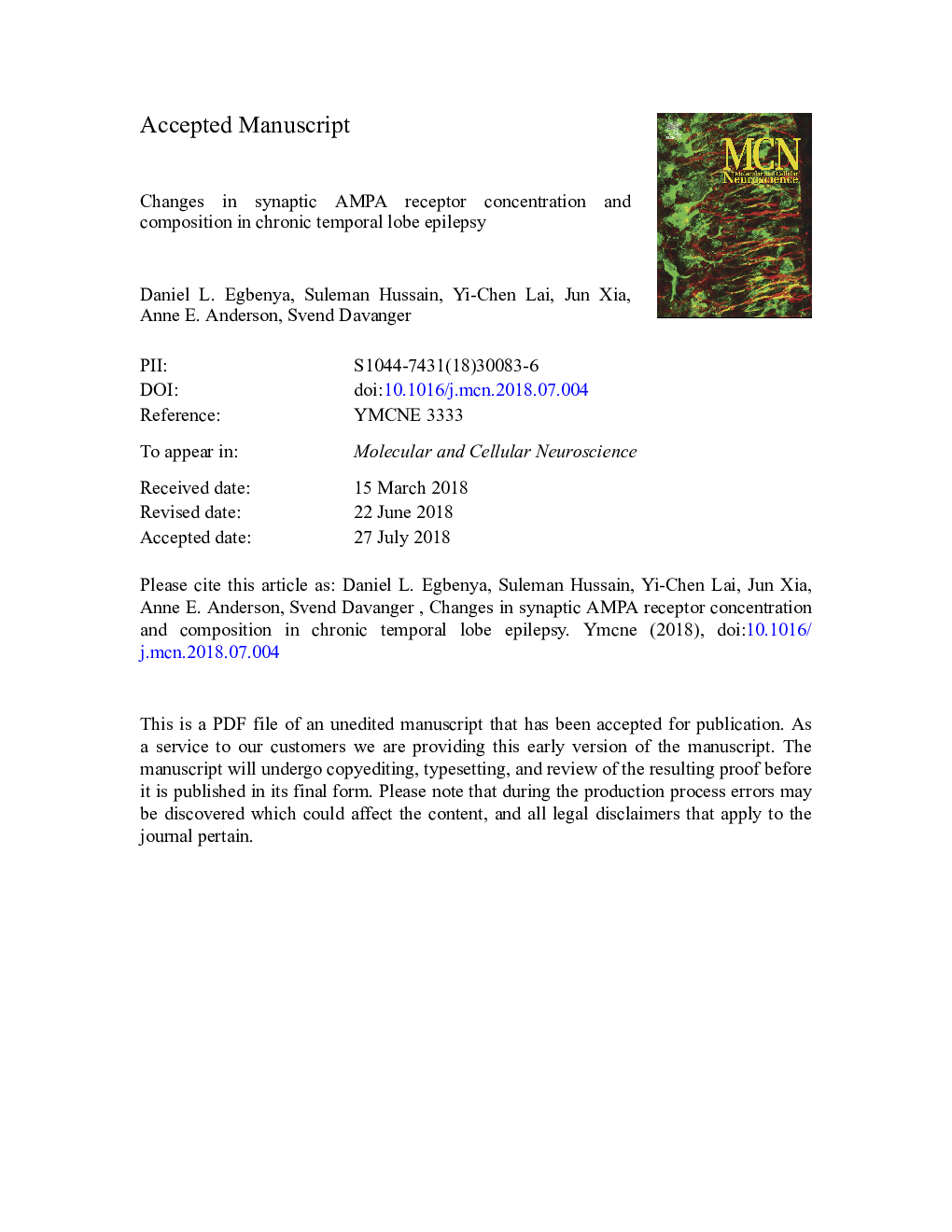| Article ID | Journal | Published Year | Pages | File Type |
|---|---|---|---|---|
| 8478341 | Molecular and Cellular Neuroscience | 2018 | 33 Pages |
Abstract
Excitotoxicity caused by excessive stimulation of glutamate receptors, resulting in pathologically increased Ca2+-concentrations, is a decisive factor in neurodegenerative diseases. We investigated long-term changes in synaptic contents of AMPA receptor subunits that play important roles in calcium regulation in chronic epilepsy. Such plastic changes may be either adaptive or detrimental. We used a kainic acid (KA)-based rat model of chronic temporal lobe epilepsy (TLE). Using hippocampal synaptosomes, we found significant reductions in the concentration of the AMPA receptor subunits GluA1 and GluA2, and the NMDA receptor subunit NR2B. The relative size of GluA1 and GluA2 reductions were almost identical, at 28% and 27%, respectively. In order to determine whether the synaptic reduction of the AMPA receptor subunits actually reflected the pool of receptors present along the postsynaptic density (PSD), as opposed to cytoplasmic or extrasynaptic pools, we performed postembedding immunogold electron microscopy (EM) of GluA1 and GluA2 in Schaffer collateral synapses in the hippocampal CA1 area. We found significant reductions, at 32% and 52% of GluA1 and GluA2 subunits, respectively, along the PSD, indicating that these synapses undergo lasting changes in glutamatergic neurotransmission during chronic TLE. When compared to the overall concentration and composition of AMPA receptors expressed in the brain, there was a relative increase in GluA2-lacking AMPA receptor subunits following chronic epilepsy. These changes in synaptic AMPA receptor subunits may possibly contribute to further aggravate the excitotoxic vulnerability of the neurons as well as have significant implications for hippocampal cognitive functions.
Related Topics
Life Sciences
Biochemistry, Genetics and Molecular Biology
Cell Biology
Authors
Daniel L. Egbenya, Suleman Hussain, Yi-Chen Lai, Jun Xia, Anne E. Anderson, Svend Davanger,
